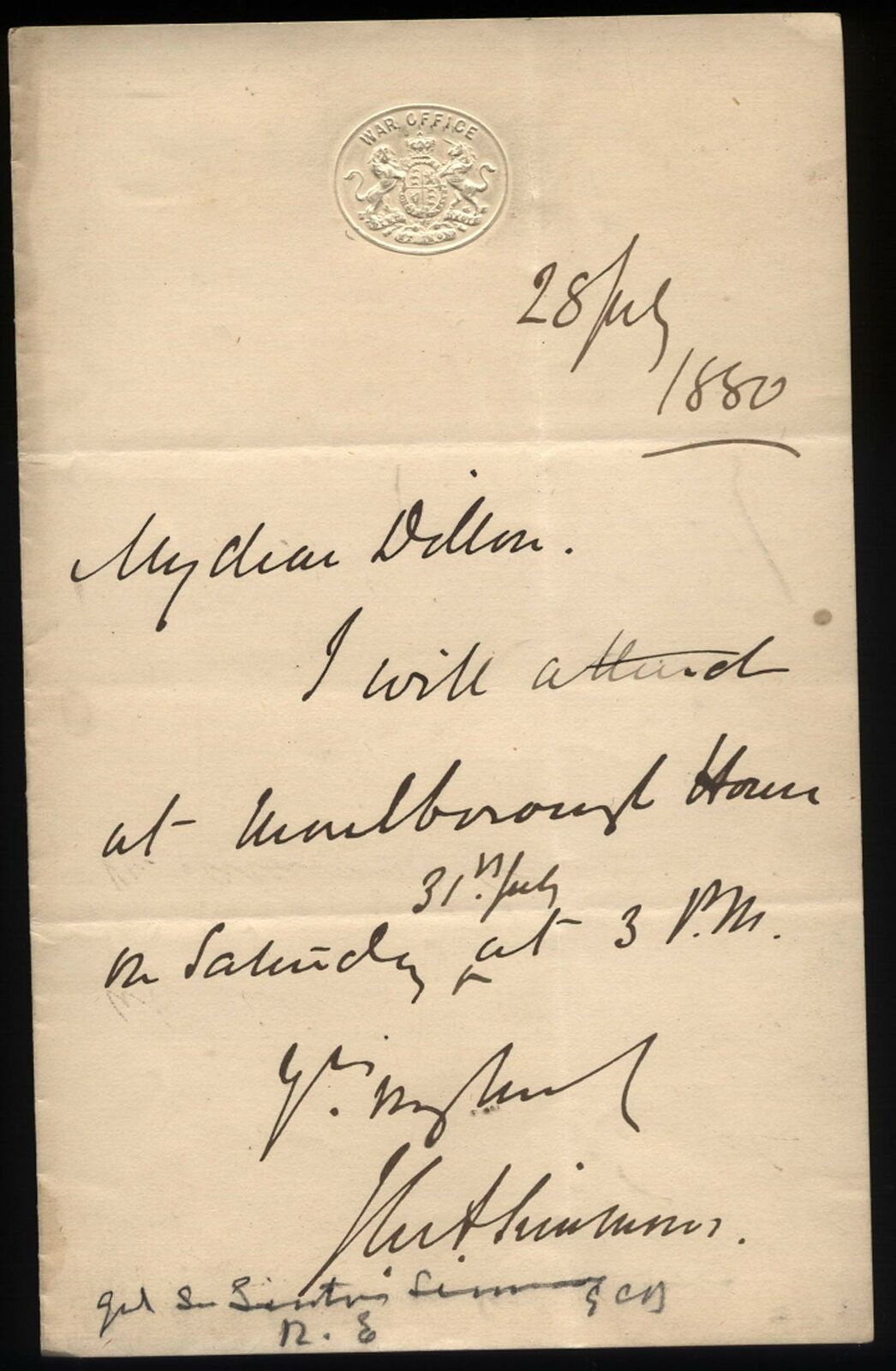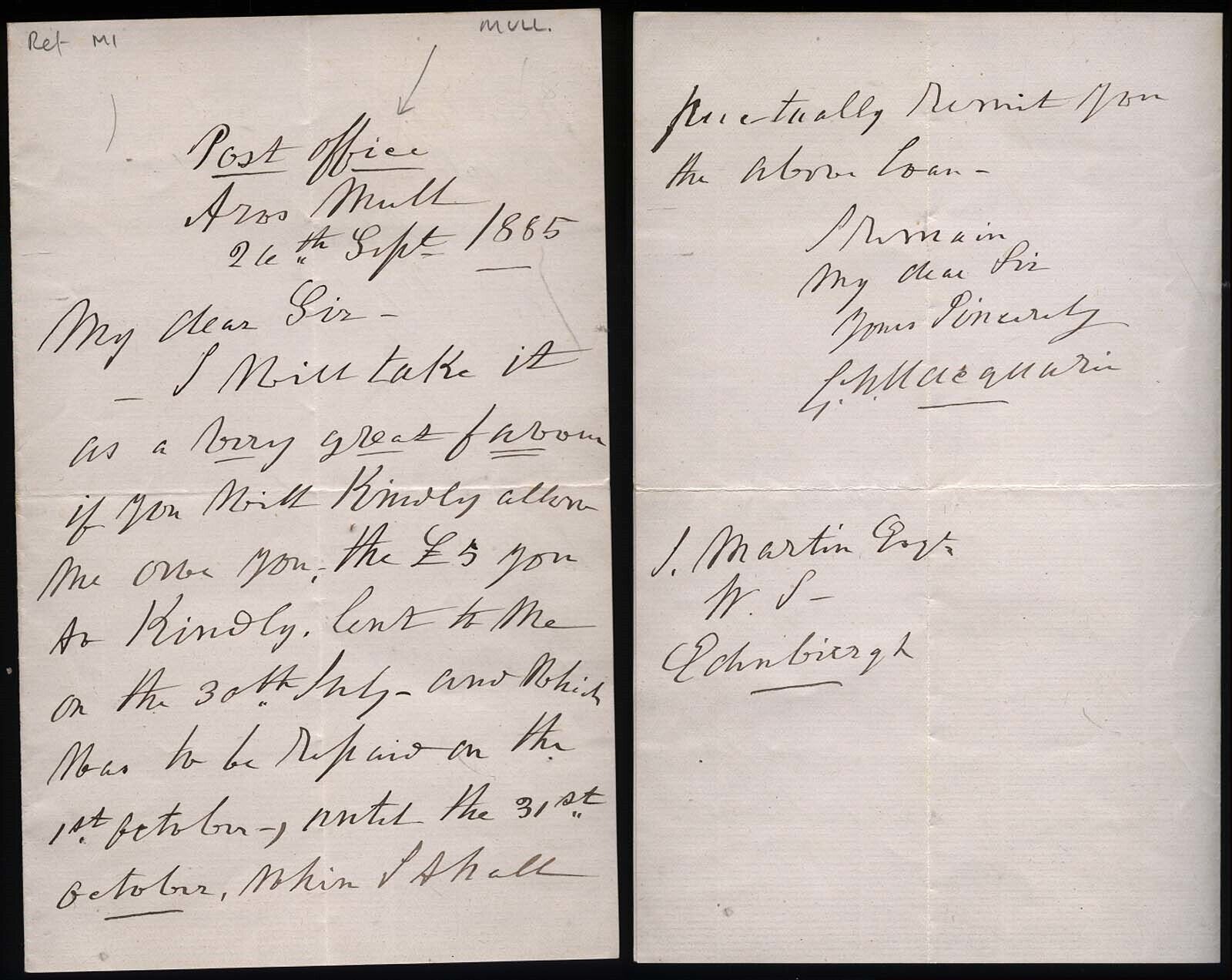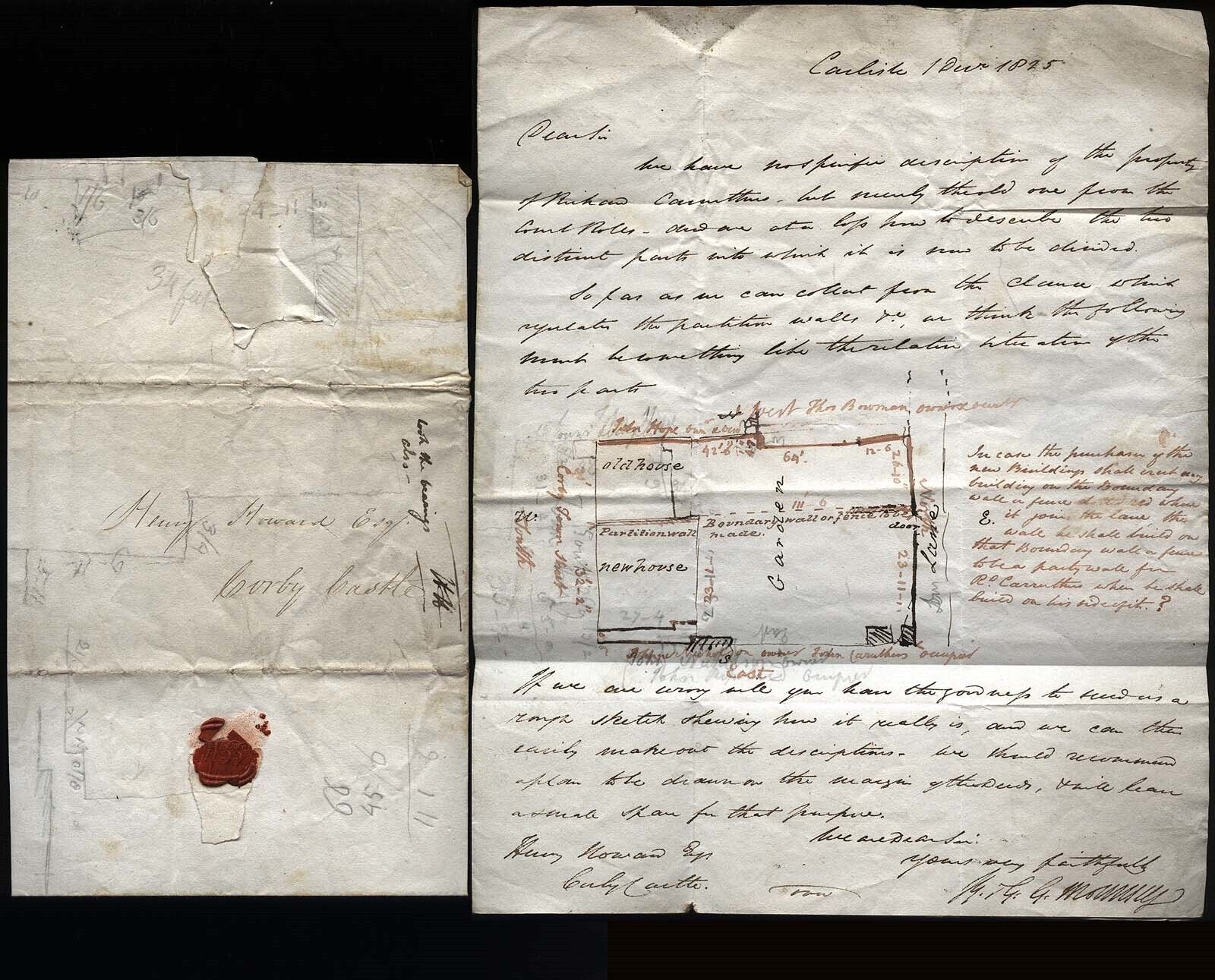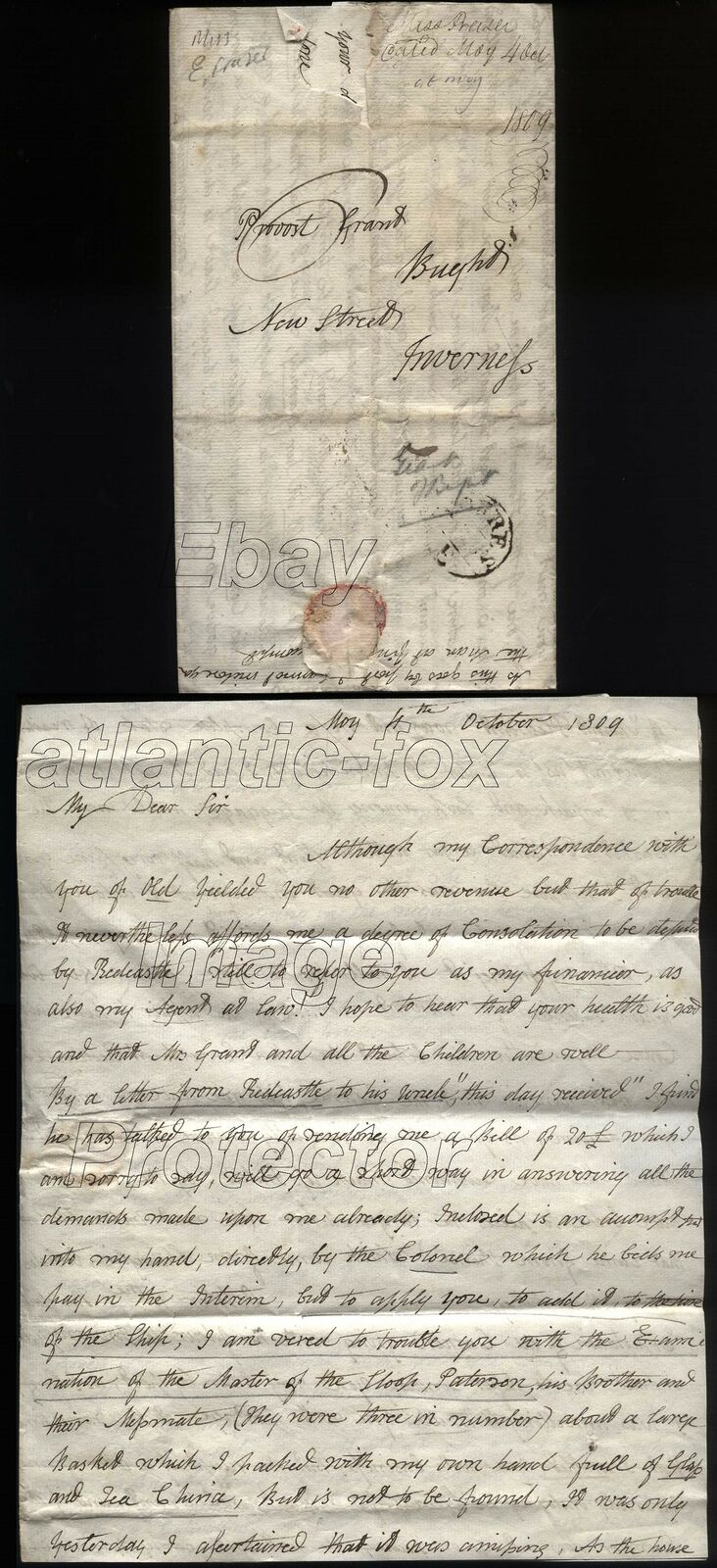-40%
1932 Frederick Ponsonby re BLACK JACK, General Sir C Kavanagh, Knight of Windsor
$ 223.94
- Description
- Size Guide
Description
1932 Frederick Ponsonby re BLACK JACK, General Sir C Kavanagh, Knight of WindsorThis product data sheet is originally written in English.
1932 Frederick Ponsonby's letter addressed to General Sir John Ponsonby, his brother concerning his opinion of BLACK JACK, General Sir C Kavanagh, as to the appointment of Military Knight of Windsor in place of the Late Major-General Carey.
Frederick Edward Grey Ponsonby, 1st Baron Sysonby, GCB, GCVO, PC (16 September 1867 – 20 October 1935) was a British soldier and courtier.
Known as Fritz
, Ponsonby was the second son of General Sir Henry Ponsonby and his wife the Hon. Mary Elizabeth (née Bulteel). A member of a junior branch of the Ponsonby family, he was the grandson of General Sir Frederick Cavendish Ponsonby and the great-grandson of Frederick Ponsonby, 3rd Earl of Bessborough. Arthur Ponsonby, 1st Baron Ponsonby of Shulbrede, was his younger brother.
His godparents were German Emperor Frederick III and Empress Victoria, which made him godbrother to Emperor Wilhelm II
Ponsonby was commissioned in the Grenadier Guards as a second lieutenant on 11 February 1888, and promoted to lieutenant on 2 July 1892. He was promoted to captain on 15 February 1899, and served with the 3rd Battalion of his regiment in the Second Boer War. Wounded at the end of the war, he returned to the United Kingdom in April 1902.[1] He was later promoted to Major and Brevet Lieutenant-Colonel, and served in the First World War. He wrote the standard history: The Grenadier Guards in the Great War of 1914-1918. 3 vols. Published in 1920.
He also held several court positions, notably as Equerry-in-Ordinary to Queen Victoria from 1894 to 1901, as Assistant Keeper of the Privy Purse and Assistant Private Secretary to Queen Victoria from 1897 to 1901, to King Edward VII from 1901 to 1910 and to King George V from 1910 to 1914; as Keeper of the Privy Purse from 1914 to 1935, and as
Lieutenant Governor of Windsor Castle from 1928 to 1935.
In 1906, Ponsonby was appointed to the Order of the Bath as a Companion (CB). In 1910, he was promoted to be a Knight Commander (KCVO) and was promoted to Knight Grand Cross (GCVO) in the 1921 New Year Honours. In 1914, he was sworn of the Privy Council. In the 1935 Birthday Honours, he was raised to the peerage as Baron Sysonby, of Wonersh in the County of Surrey
Lord Sysonby married Victoria, daughter of Colonel Edmund Hegan Kennard, on 17 May 1899, at the Guards Chapel, Wellington Barracks. She later became a well-known cook book author.
They had three children: Victor Alexander Henry Desmond Ponsonby (19 June 1900 – 24 November 1900)
Hon. Loelia Mary Ponsonby (1902–1993)
Hon. Edward Gaspard Ponsonby (1903–1956)
Lord Sysonby died in London in October 1935, aged 68, only four months after his elevation to the peerage, and was cremated at Golders Green Crematorium. He was succeeded in the barony by his surviving son Edward. Lady Sysonby died in 1955.
His autobiography Recollections of Three Reigns, edited and published posthumously in 1951, is full, frank and entertaining. Nancy Mitford wrote to Evelyn Waugh that there was "a shriek on every page". He also edited Letters of the Empress Frederick (1928) and published Sidelights on Queen Victoria (1930).
The Ponsonby family has played a leading role in British life for two centuries. His father was the Sir Henry Ponsonby - memorably played by Geoffrey Palmer in the film 'Mrs. Brown' - who was Private Secretary to Queen Victoria. His grandfather was badly wounded at the Battle of Waterloo, but survived to become General Sir Frederick Ponsonby. Lady Caroline, better known to history under her married name of Lady Caroline Lamb, was the wife of the future Prime Minister Lord Melbourne and lover of the poet Lord Byron. This lady was also a key figure in a film - played by Sarah Miles - in 1972. The father of the two siblings, Frederick's great-grandfather, was the 3rd Earl of Bessborough. The man wounded at Waterloo is not to be confused with another Ponsonby depicted on film, his kinsman General Sir William Ponsonby, whose death - possibly due to not risking his best horse in battle - at the hands of a group of lancers is an incident noted in the film 'Waterloo'. Frederick's daughter, Loelia, married the 2nd Duke of Westminster, before remarrying, after the Second World War, to become the alliterative Lady Loelia Lindsay.
The Military Knights of Windsor
,
originally the Alms Knights and informally the Poor Knights, are retired military officers who receive a pension and accommodation at Windsor Castle, and who provide support for the Order of the Garter and for the services of St. George's Chapel, Windsor Castle. They are commanded by a senior retired officer as Governor of the Military Knights of Windsor.
History
The Alms Knights of St. George's Chapel were constituted by King Edward III following the Battle of Crécy (1346), when many knights captured by the French were forced to liquidate their estates to raise ransom money in order to secure their release. At the original establishment of the Order of the Garter and its chapel at Windsor (1348), veteran warriors were called to "serve God continually in prayer". In the statutes of the College of St. George's, a community of twenty-six bedesmen, called Alms Knights or Poor Knights, were appointed. Their duties included attending four services per day and praying for the sovereign and the knights of the Order of the Garter and rooms.
The Alms Knights were a chantry, a religious foundation organized to pray for its patron. Poor Knights were originally impoverished military veterans. They were required to pray daily for the Sovereign and Knights Companions of the Order of the Garter; in return, they received 12d per day and 40s per year, and were lodged in Windsor Castle.
King Henry VIII halved their number to thirteen, Elizabeth I re-founded the order in 1559.[2] At his restoration, King Charles II increased the number to eighteen. King William IV renamed them the Military Knights of Windsor in 1833.
Today, the Military Knights, who are no longer necessarily poor, but are still military pensioners, participate in the Order's processions, escorting the Knights and Ladies of the Garter, and in the daily services in St. George's Chapel. They are not members of the Order itself, nor are they automatically a knight of any chivalric order.
Governor
The office of Governor of the Military Knights of Windsor is part of the Royal Household of the Sovereign of the United Kingdom, and dates from the mid-sixteenth century. From 1905 it has been controlled by the Constable of Windsor Castle, having formerly been responsible to the Dean of Windsor. Since 1906 the Governor has always been a senior retired officer.
List of Governors of the Military Knights of Windsor
This list is incomplete; . c.1583: John Moulsworth (Mowlesworth) of Helpston, co Northants: will dated 7th August 1583, Proved PCC 18th July 1584. Buried at St John the Baptist, New Windsor 2nd September 1583[5] to 1771: Sir William Wittewronge c.1820: Colonel Thomas Bassett 1842: Captain John Jonstone Cumming[6] 1843: Major Charles Moore 1843-1844: Captain Thomas Fernyhough, who died after 6mths in office. He was the first person to be buried in the catacombs beneath St George's Chapel. (Ref: 9/1/1844 and 16/1/1844 in the London Standard, The Colburn’s United Service Magazine 1844 ) 1867: Major Sir John Paul Hopkins 1892: His Grace The Duke of Argyll, KT GCMG GCVO PC 1892-1906 1906: Major-General Edward Henry Courtney
1913: Major-General Walter Carteret Carey [9]
1932: Lieutenant-General Sir Charles Kavanagh, KCB KCMG CVO DSO
Fresh to the Market Place, from Major-General Sir John Ponsonby's Collection
For more from this collection see our shop category for SIR JOHN PONSONBY COLLECTION
John Ponsonby (British Army officer)From Wikipedia, the free encyclopedia
Major-General Sir John Ponsonby KCB CMG DSO (25 March 1866 – 26 March 1952) was a British Army officer who commanded 5th Division during World War I
Born the son of Sir Henry Ponsonby (Queen Victoria's Private Secretary), his Mother Hon. Mary Elizabeth Ponsonby, Maid of Honour to Queen Victoria and a daughter of John Crocker Bulteel.
His brothers were Frederick Ponsonby, ( Assistant Private Secretary to Edward VII & GV), and Arthur Augustus William Harry Ponsonby, 1st Baron Ponsonby of Shulbrede, (British politician, writer, and social activist).
Sir John was educated at Eton College, He was gazetted to the Royal Irish Rifles 16 November 1887, and to the Coldstream Guards 15 August 1888, becoming Lieutenant 29 June 1891. He was ADC to the Governor and Commander-in-Chief, South Africa, 10 August 1891 to 30 January 1895; served in operations in Matabeleland (Medal); was promoted to Captain 7 September 1898, and in that year served in Uganda (Medal), and again in 1899, during the operations against Kabarega (clasp). Captain Ponsonby served in the South African War, 1899-1902, on special service with the Rhodesian Field Force, 19 February 1900 to 7 July 1901. He was Adjutant, 5th New Zealand Regiment, 8 June 1900 to 1 January 1901; afterwards in command 1 January to 18 January 1901. From February to May 1900, be was employed with Mounted Infantry, and he took part in operations in the Transvaal, west of Pretoria, from July to 29 November 1900; operations in the Transvaal, February to June 1901; operations in Cape Colony, February to 31 May 1902. He was mentioned in Despatches [London Gazette, 10 September 1901]; received the Queen's Medal with four clasps, the King's Medal with two clasps, and was created a Companion of the Distinguished Service Order [London Gazette, 27 September 1901]: "John Ponsonby, Captain, Coldstream Guards. In recognition of services during the operations in South Africa". The Insignia were presented by the King 27 October 1901. He was promoted to Major 23 January 1904, and commanded the Guards' Depot 1 March 1905 to 28 February 1907. He became Lieutenant Colonel 28 October 1913.
Lieutenant Colonel Ponsonby served in the European War, 1914—18; Landed in France 13th August 1914 in charge of 1st Coldstream Guards,Wounded 15th September & returned to unit 21st November. commanded the 2nd Guards Brigade, BEF, 26 August 1915 to 19 November 1916: was given the Brevet of Colonel 1 January 1916; commanded the Special Reserve Infantry Brigade 28 November 1916 to 7 March 1917; commanded the 21st Infantry Brigade, BEF, 8 March to 20 March 1917; became Colonel 20 March 1917; commanded the 2nd Guards Brigade, British Armies in France, 21 March to 21 August 1917; commanded the 40th Division, British Armies in France, 22 August 1917 to 3 July 1918; subsequently commanded the 5th Division, British Armies in France, 4 July 1918 to 1 April 1919; was promoted to Major General 1 January 1919. He was mentioned in Despatches; created a CMG in 1915, a CB in 1918, and was given the Brevet of Colonel.
He went on to become General Officer Commanding 5th Division remaining in that role until the end of the War. After the War he became General Officer Commanding the Madras District of India. He retired in 1928.
He lived at Haile Hall near Beckermet in Cumbria
:
Powered by SixBit's eCommerce Solution
1932 Frederick Ponsonby's letter addressed to General Sir John Ponsonby, his brother concerning his opinion of BLACK JACK, General Sir C Kavanagh, as to the appointment of Military Knight of Windsor in place of the Late Major-General Carey. Frederick Edward Grey Ponsonby, 1st Baron Sysonby, GCB, GCVO, PC (16 September 1867 – 20 October 1935) was a British soldier and courtier. Known as Fritz, Ponsonby was the second son of General Sir Henry Ponsonby and his wife the Hon. Mary Elizabeth (née Bulteel). A member of a junior branch of the Ponsonby family, he was the grandson of General Sir Frederick Cavendish Ponsonby and the great-grandson of Frederick Ponsonby, 3rd Earl of Bessborough. Arthur Ponsonby, 1st Baron Ponsonby of Shulbrede, was his younger brother.His godparents were German Empe
Related Interests
Military Knights of Windsor
EAN
Does Not apply
Country
England
Royal Residence
Windsor Castle
Royal
George V (1910-1936)
England County
Berkshire
City/Town/Village/Place
Windsor
Family Surname
Ponsonby
Era
1901-1950
Addressed to
General Sir John Ponsonby
Document Type
Original Manuscript Letter
Year of Issue
1932
Related Interests 2
Sir Charles Kavanagh












